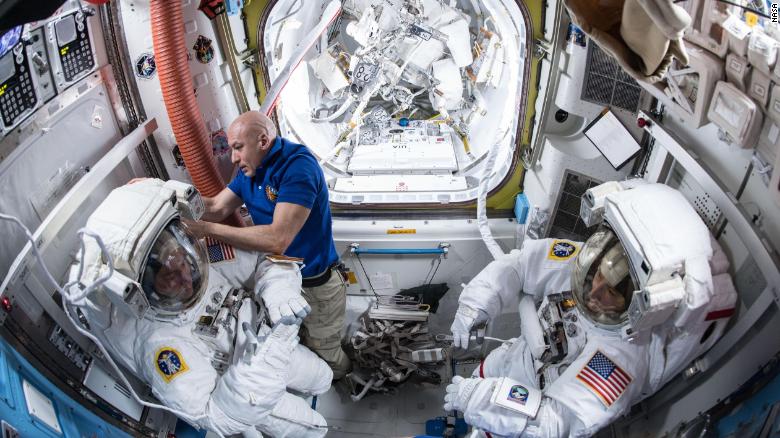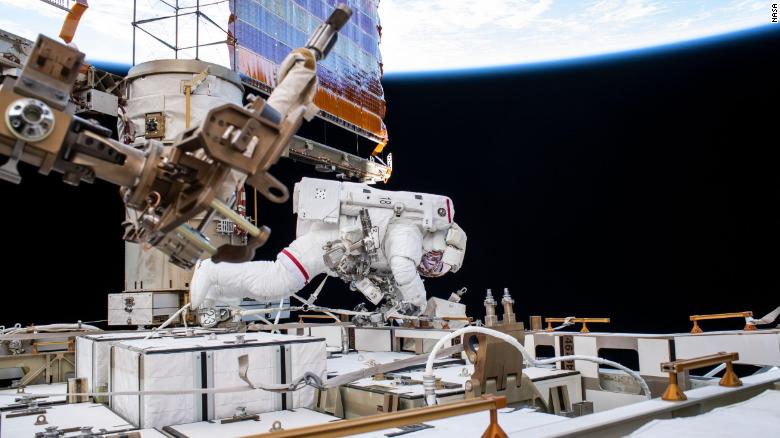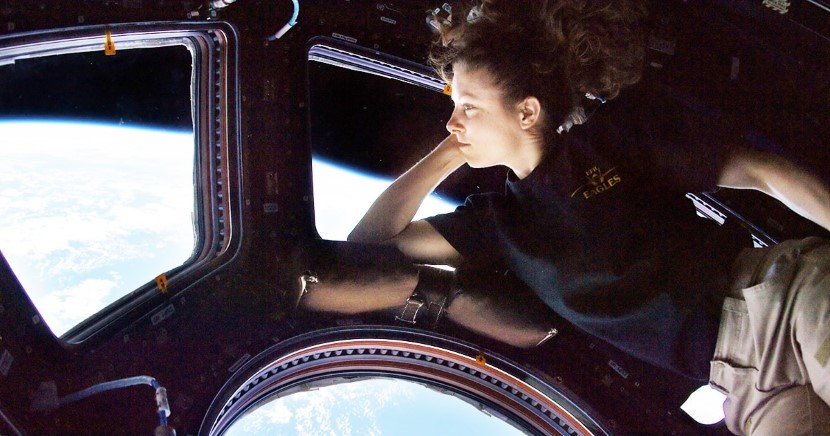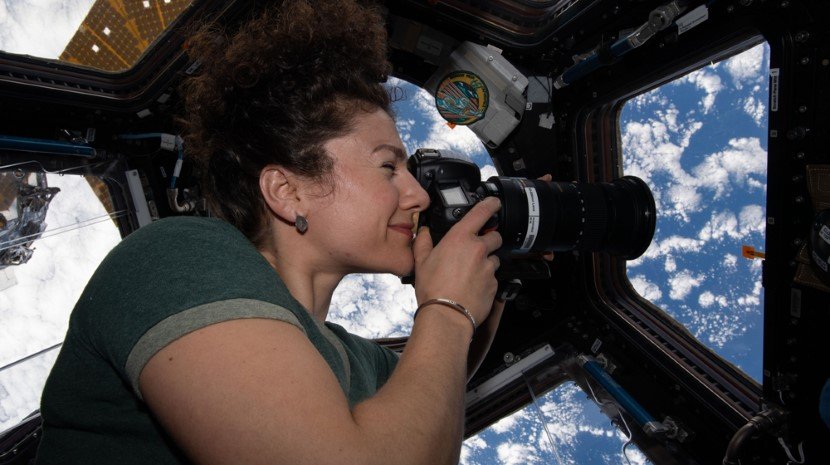Life on the International Space Station? Here’s a factual insight!
 © NASA
© NASA
You have probably wondered what it is like living in space, thousands of miles away from Earth, at some point in your life. How must it feel, mindlessly floating around and having the whole world right below your feet? Although it does seem to be a very tempting experience, there is much more life on the International Space Station to it than you would think. Here are some International Space Station facts which may intrigue you.
Contents
When and how the International Space Station was constructed?
A partnership between the United States, Russia, Canada, Europe and Japan enabled the construction of the International Space Station back in November 1998. 42 assembly flights were carried out using 37 US space shuttles and five Russian rockets to build the ISS piece by piece. The last major piece of equipment sent to ISS was an Alpha Magnetic Spectrometer to facilitate particle physics experiments. It was sent in May 2011.
The International Space Station; a floating laboratory
The International Space Station, or the ISS, is essentially a 360-ton laboratory that flies 400km above the Earth, accommodating six space engineers and scientists set out to explore the universe beyond our motherland. If anything along the lines of science or astronomy has ever piqued your interest, chances are the scientists up at ISS are already hard at work to gather more information about it.
The space station stretches for about a hundred meters across, housing six sleeping capsules, a gym, an area reserved for experiments, and a cupola to observe the Earth below. Solar panels spanning an acre power this station, illuminating it enough to be seen from the Earth from the naked eye. If observed from the Earth, it resembles a fast airplane; little dots of light racing across the sky. Space enthusiasts can use Spot the Station by NASA to explore and find sighting opportunities since the station’s orbital path covers almost 90% of the world’s population.
The ISS orbits the Earth once every 92 minutes, at a speed of 5 miles per second, or 18 kilometers per hour. Astronauts onboard can experience 16 sunrises and sunsets in a single day!
The daily routine of the six particular individuals working at the International Space Station is not much different from ours. However, the numerous obstacles in even the most trivial tasks, such as eating, set them apart from the rest of us.
Life on the International Space Station – A peek at the activities inside the ISS:
The astronauts start their day just like any ordinary person, by brushing their teeth. But the absence of gravity compels the crew members to carry such simple activities out in a way much different from that on Earth.
Personal Hygiene in Space
The scientists use edible toothpaste to brush their teeth, so it can be swallowed instead of having to spit it out. They must brush by closing their mouths as much as possible to ensure the toothpaste does not fly away. The astronauts can shower using rinseless soap and shampoo, and their toilets use leg restraints and a vacuum to suck the waste and store it to be disposed of later.
Eating in space
Food brought to space must be carefully chosen. Salt and pepper can only be taken to space as liquids, as the grains would float off. The crew members can only afford to eat certain foods, such as rehydratable or thermo-stabilized foods. Since there is no refrigerator, therefore the food has to be stored carefully and often vacuum-packed before it is resupplied every few months. Lack of refrigeration aboard the ISS leaves the crew members with no choice but to consume the fresh fruits as soon as they can after being delivered with each cargo mission. Zero-gravity makes eating meals quite a hassle too. Meal trays and ingredients must be taped to the wall or their laps.
Just like normal human beings, astronauts too eat three meals a day: breakfast, lunch and dinner. The only difference is that they have a lot more options to choose from which include chicken, beef, seafood, nuts, fruits, candies, peanut butter, desserts etc. to name a few. Also, the drinks available at the ISS include coffee, tea, fruit punches, orange juice and lemonade. It is ensured that the food provided to astronauts is well balanced with required nutrients, vitamins and minerals.
Sleeping in space
At the end of the day, the crew members lay down to rest in sleeping bags inside their respective crew cabins. Although they’re scheduled eight hours of sleep, difficulty in getting a shut-eye is often reported due to motion sickness or exhilaration. They have to restrain themselves inside their sleeping bags so they don’t float off and harm themselves.
Impact of zero-gravity on the human body
Living in space can be perceived as standing on your head for a long period of time, so it takes crew members time to adapt. The blood and water pools towards the head, which leaves the face red and puffy. Astronauts also generally experience a change in their physical characteristics and can grow a few centimeters taller, or in Astronaut Scott Kelly’s case, 1.5 inches, and even changes in his genetic expression which was likely because of DNA damage due to radiation exposure after spending nearly a year in space.
Living on the international space station can sometimes lead to major injuries or diseases, as our bodies are habituated to Earth. Due to this factor, most astronauts are expected to have a strong immune system and must have a strict workout session regularly.
Since there is no gravity, the crew members float to get about, and do not use their lower body. Exercising regularly ensures their leg muscles do not gradually debilitate, and prevents bone and muscle loss. Crew members have to exercise for more than two hours a day.
There are usually three pieces of workout equipment present on board which include a treadmill, an exercise bike, and the Advanced Resistive Exercise Device or ARED, which is a weightlifting gym operated using vacuum tubes instead of actual weights. Astronaut Reid Wiseman, in a video for NASA, described running on the treadmill as “running straight towards the Earth.”
Astronauts are also exposed to cosmic rays for long periods of time which can directly damage DNA and increase risks of chronic illnesses.
A walk outside the spacecraft.
Extra-vehicular activity, more commonly known as spacewalking, probably sounds like the most fascinating aspect of working in outer space, but it is the most arduous one.
There is no room for mistakes when it comes to spacewalking. Even a minor slip-up can result in a painful death, mainly due to extreme temperatures and a total lack of pressure. This is why it is primal for astronauts to go through around a hundred-page long checklist to guarantee the safety of the astronaut before they leave the safety of their spacecraft, which can take up to several hours. It would take four hours just to put the space suit on. Astronauts can only leave the spacecraft in pairs, so there is always someone to come to aid in case of a mishap.

Outside the space station, the pair of astronauts can spend up to 8 hours carrying out scheduled tasks. But the training for the spacewalk begins long before the astronauts are actually sent to space. On Earth, each astronaut spends several hours in training on a model of ISS which is submerged underwater inside a giant water tank. This training setup mimics the environmental effects of that of space and allow the astronauts to familiarize themselves by doing things that they would be required to do aboard the international space station.
Extra-vehicular activity (EVA) is necessary for general maintenance and repair of the spacecraft. Even a minor flaw in the machinery can endanger the mission and the lives of the scientists onboard. But its easier said than done. Any repair work outside the space station is one of the riskiest and trickiest jobs that is why it is planned to perfection considering every possible detail for up to one month in advance before the astronauts could leave the spacecraft to carry out the actual repairs. Teamwork and cooperation is of essence when it comes to tasks as hazardous as spacewalking.

Experimenting in microgravity
The pros of working in space mainly serve as an incentive to carry out the needed experiments and researches, which is the main purpose of the International Space Station.
The scientists spend their days experimenting on a vast number of subjects regarding the Earth and entities in space. They also study the impact of zero-gravity on organisms and living cells. Animals (mice, ants, fish and worms) have been sent to the ISS as well, but humans are the most frequent visitors.
Scientists in the International Space System also serve as research subjects themselves, to study the impacts of space on the human body. Such information is vital for long-distance space travel in the future, such as a trip to Mars.
There are five laboratory modules on the space station, which include:
- Two mini research modules by Russia.
- Destiny Lab by the US.
- Columbus facility by the European Space Agency.
- Kibo Lab by Japan is the most recent facility having a platform that allows astronauts to carry out experiments outside the space station.

Communicating across space
Even in space, hundreds of kilometers above Earth, communication is persistent and contact with the people on Earth is not terminated. Astronauts can regularly contact their loved ones through the internet, send emails, and hold video conferences.
Chris Hadfield was the commander of the International Space Station in 2013, and was the first Canadian to walk in space. He went viral on Twitter when he began to upload videos of him playing the guitar inside the spacecraft. Astronauts have since been using social media to share their experiences during their missions, with the world.
Technology has allowed an effortless exchange of information through the internet, as astronauts can also share pictures and videos of the view from their spacecraft.
The future of the International Space Station
Undoubtedly, the International Space Station has played a major role in obtaining facts about the solar system beyond Earth, but the rapid progress in technology may lead to major discoveries sooner than we expect.
According to estimations by NASA, the ISS has helped in carrying out over 2500 experiments since its first launch in 1998. Expedition 61, carried out in 2019, resulted in the first-ever all-female spacewalk, led by Astronauts Christina Koch and Jessica Meir. Koch, which set the record for the longest spaceflight by a woman.
The International Space Station could not exist without the cooperation of several countries. It encompasses the space agencies of the United States, Russia, Europe, Japan, and Canada, which work in collaboration for an honest exchange of information and resources.
“We’ve had continuous human presence on the space station for 19 years now,” said NASA spokesperson Stephanie Schierholz. “It is an unprecedented international collaboration among nations.”
The life of the scientists at the ISS and its existence itself is exemplary and hints at major breakthroughs that may be possible if the great powers unite to make common cause.

